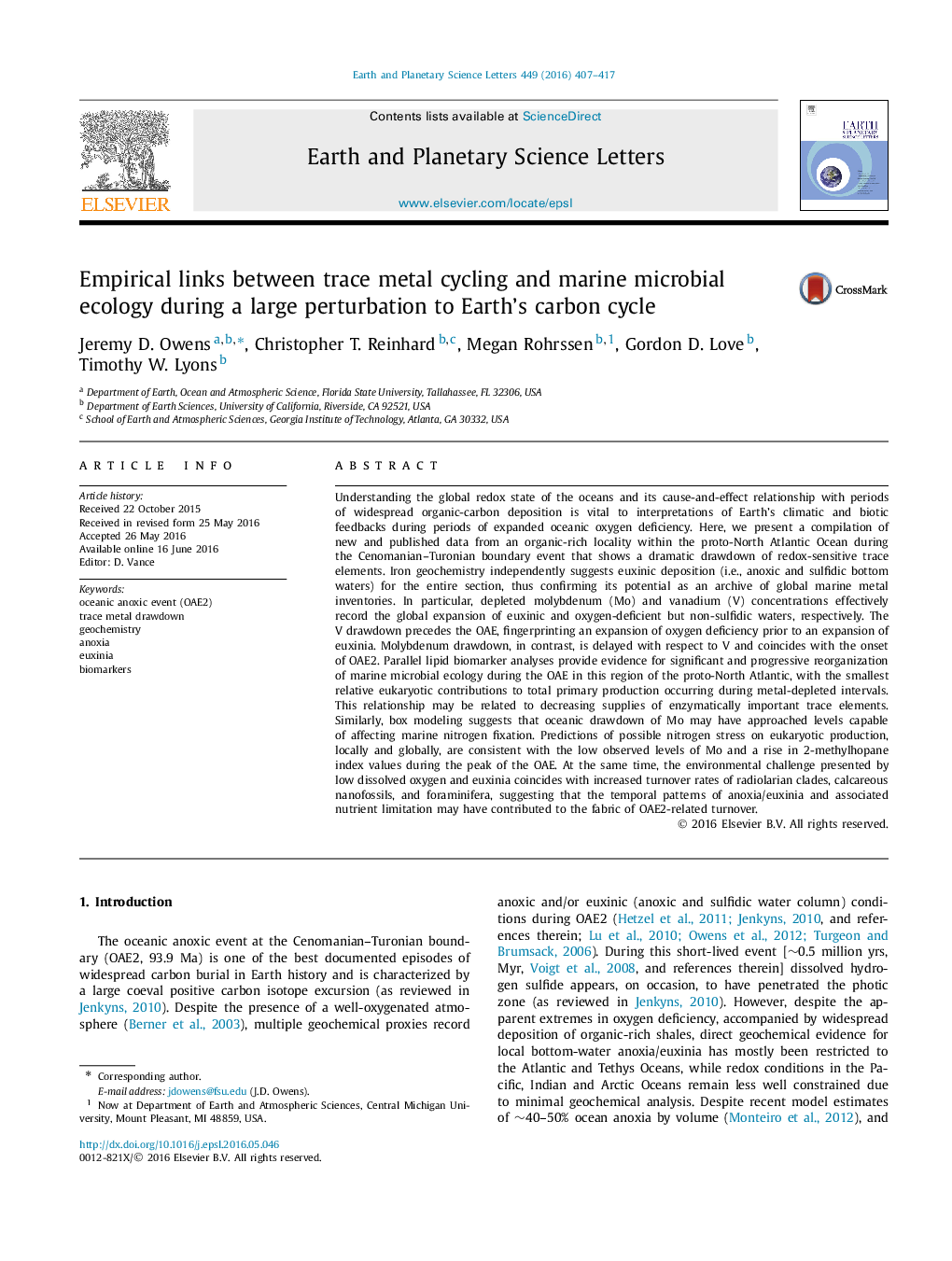| Article ID | Journal | Published Year | Pages | File Type |
|---|---|---|---|---|
| 6427413 | Earth and Planetary Science Letters | 2016 | 11 Pages |
â¢Temporal trace metal drawdown suggests a global expansion of oxygen deficiency prior to euxinia.â¢Modeling Mo drawdown suggest the marine inventory reduction could be biolimiting with <7% euxinia.â¢Eukaryotic biomarkers contribution decreases during the metal-depleted OAE.â¢Progressive global deoxygenation and nutrient limitations coincide with known turnover pattern.
Understanding the global redox state of the oceans and its cause-and-effect relationship with periods of widespread organic-carbon deposition is vital to interpretations of Earth's climatic and biotic feedbacks during periods of expanded oceanic oxygen deficiency. Here, we present a compilation of new and published data from an organic-rich locality within the proto-North Atlantic Ocean during the Cenomanian-Turonian boundary event that shows a dramatic drawdown of redox-sensitive trace elements. Iron geochemistry independently suggests euxinic deposition (i.e., anoxic and sulfidic bottom waters) for the entire section, thus confirming its potential as an archive of global marine metal inventories. In particular, depleted molybdenum (Mo) and vanadium (V) concentrations effectively record the global expansion of euxinic and oxygen-deficient but non-sulfidic waters, respectively. The V drawdown precedes the OAE, fingerprinting an expansion of oxygen deficiency prior to an expansion of euxinia. Molybdenum drawdown, in contrast, is delayed with respect to V and coincides with the onset of OAE2. Parallel lipid biomarker analyses provide evidence for significant and progressive reorganization of marine microbial ecology during the OAE in this region of the proto-North Atlantic, with the smallest relative eukaryotic contributions to total primary production occurring during metal-depleted intervals. This relationship may be related to decreasing supplies of enzymatically important trace elements. Similarly, box modeling suggests that oceanic drawdown of Mo may have approached levels capable of affecting marine nitrogen fixation. Predictions of possible nitrogen stress on eukaryotic production, locally and globally, are consistent with the low observed levels of Mo and a rise in 2-methylhopane index values during the peak of the OAE. At the same time, the environmental challenge presented by low dissolved oxygen and euxinia coincides with increased turnover rates of radiolarian clades, calcareous nanofossils, and foraminifera, suggesting that the temporal patterns of anoxia/euxinia and associated nutrient limitation may have contributed to the fabric of OAE2-related turnover.
